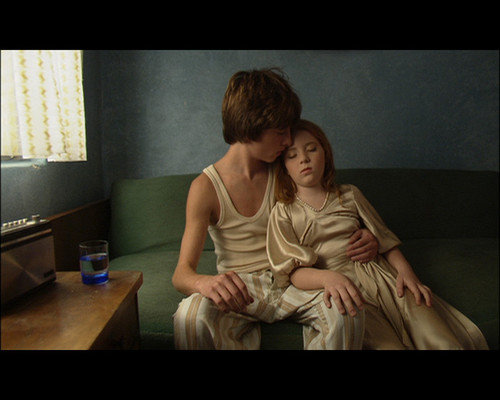Two exhibitions
dal 21/11/2008 al 24/1/2009
Segnalato da
Halil Altindere
Fernando Bryce
Patricia Esquivias
Deimantas Narkevicius
Olaf Nicolai
Ola Pehrson
Romana Scheffknecht
Erzen Shkololli
Amelie von Wulffen
Sejla Kameric
21/11/2008
Two exhibitions
Galerie im Taxispalais, Innsbruck
Sejla Kameric: on the one hand, the artist shows a fictive film scenario of her family history, and on the other hand, photographic works in which she traces indications of a violent past. Ritornell. Nine stories: for this exhibition the 'Refrain' shall work as a metaphor for nine art works where the return of a motif, the process of re-telling is playing an important role.

RITORNELL. Nine Stories
Artists:
Halil Altindere, Fernando Bryce, Patricia Esquivias, Deimantas Narkevicius, Olaf Nicolai, Ola Pehrson, Romana Scheffknecht, Erzen Shkololli, Amelie von Wulffen
The “Refrain” (ritournelle) signifies the return of a motif, the instrumental inter-, pre- or postlude in the concerto grosso. For Deleuze/Guattari [1] the “refrain“ indicates an in-between, the realm between chaos and order: “A child in the dark, gripped with fear, comforts himself by singing under his breath. [...] This song is a sort of first approach towards a stabilising and calming centre in the chaos.” With the help of the “Refrain” one succeeds to create a home that however allows for launching forth, and from which lines of flight can develop.
For this exhibition the “Refrain” shall work as a metaphor for nine art works where the return of a motif, the process of re-telling is playing an important role. The motifs derive from different discourses, they come from history and from the contemporary, from everyday life as well as from politics; they can be real or fictitious and are referring to modes of modern media as well as to traditional fables or narratives.
By artistic practices − specified through various media such as sculpture, drawing, video, photography and painting − a kind of movement is being initiated, a “Refrain”, transforming these motifs by poetic, sometimes ironic means and transferring them from history into the present day. Long forgotten or repressed stories, images and ideas become productive for a current experience.
[1] Gilles Deleuze, Félix Guattari, A Thousand Plateaus: Capitalism and Schizophrenia (1980), Continuum International Publishing Group, London 2004, p.342.
-----------------
Sejla Kameric
The exhibition of work by Bosnian artist Šejla Kamerić is dealing with history, with distant memories from the past. On the one hand, Kamerić shows a fictive film scenario of her family history, and on the other hand, photographic works in which she traces indications of a violent past − on the surface of a wall, or using the example of an historical colour photograph from the Warsaw ghetto.
Šejla Kamerić was born in Sarajevo in 1976. She lives and works in Sarajevo and Berlin.
Galerie im Taxispalais
Maria-Theresien Strasse 45 - Innsbruck



